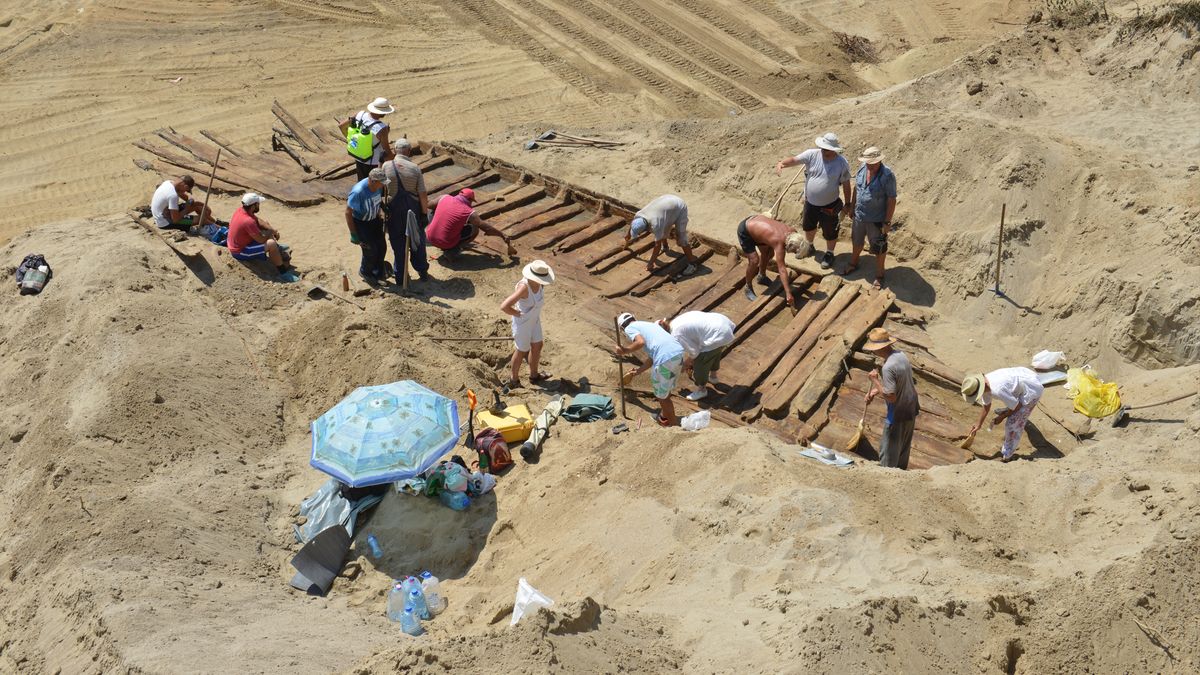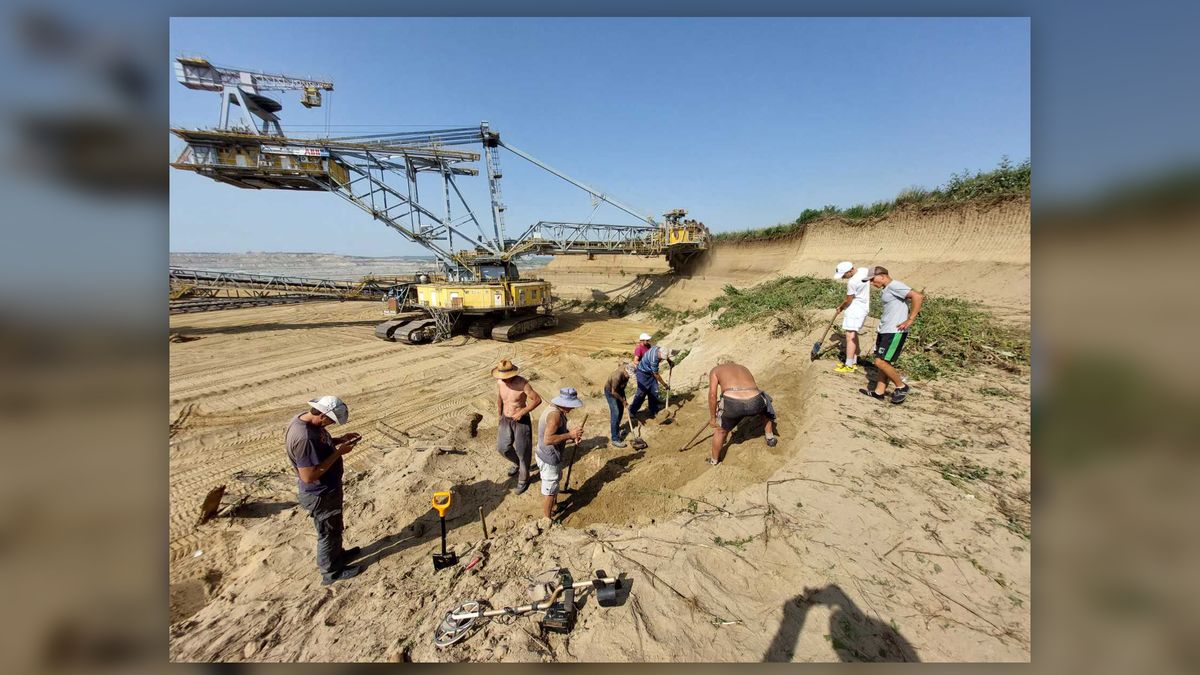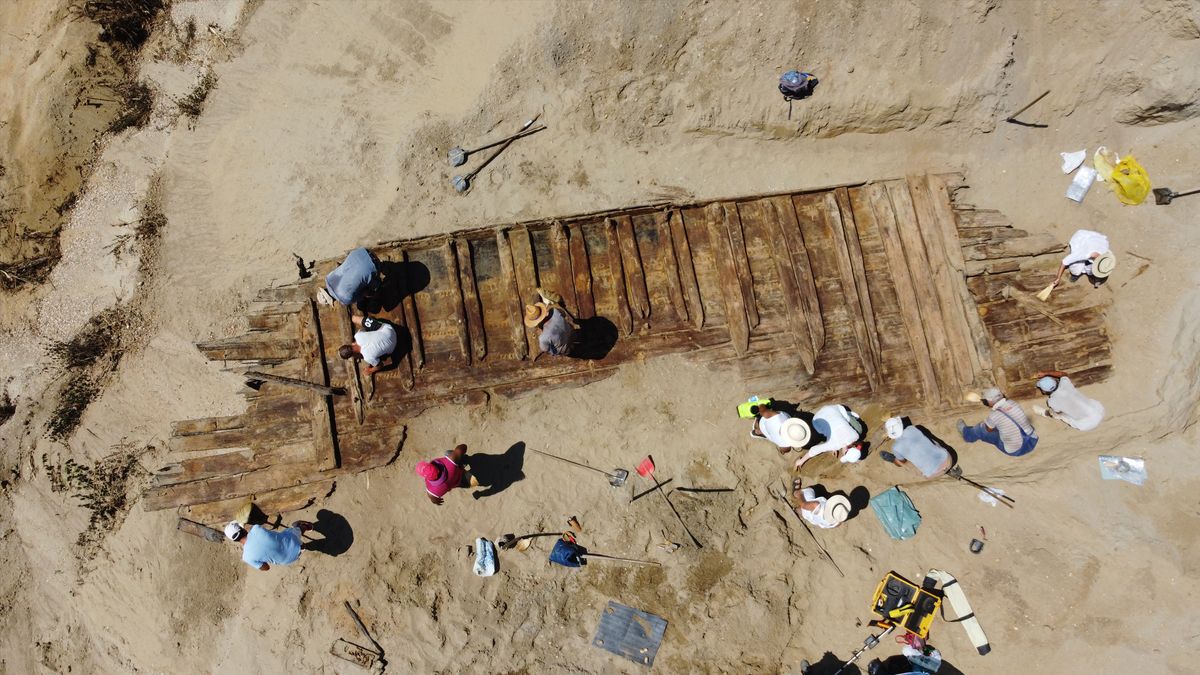Ancient Roman Boat Unearthed in Serbian Coal Mine: A Fascinating Discovery
In a coal mine near Kostolac, Serbia, coal miners made an extraordinary find—a well-preserved Roman boat that likely served as a vital supply vessel for an ancient frontier city and military headquarters. Archaeologists are eagerly awaiting radiocarbon dating results of the wooden remains, but they believe it dates back to the third or fourth centuries A.D. The boat is thought to have navigated small rivers between the Danube River and the Roman city of Viminacium, situated approximately 1 mile (1.6 kilometers) away. Viminacium, established in the early first century A.D., served as an essential trading hub and a center of Roman culture.

Discovered in late July at the Drmno surface coal mine, the wooden remains were found buried in silt approximately 25 feet (8 meters) below the surface. The preservation of the ancient vessel was likely aided by the damp conditions of the wooden boards and the surrounding sand. However, exposure to sunlight posed a threat of rapid drying, prompting the archaeologists to carefully douse the remains with water during excavation.
The Roman boat is estimated to have been around 65 feet (20 meters) long and 12 feet (3.5 meters) wide, with a flat-bottomed design resembling a barge. Archaeologists believe it was primarily used to transport cargo between the Danube and Viminacium. The vessel could have been towed from the shore or propelled by oars, and it may have utilized auxiliary sails in favorable conditions.

Notably, this isn’t the first ancient boat unearthed in the area. Similar remains were found nearby in 2020, indicating that the region was once a navigable backwater of the Danube River.
Viminacium, which served as a Roman settlement and military fort, became the capital of the Roman Empire’s Upper Moesia (Moesia Superior) frontier province after A.D. 87. With a population of up to 45,000 people, it was a bustling trading center and a significant hub of Roman culture in the Balkans. The fort housed several Roman legions, and the surrounding region was known for its hostility towards Roman rule. Despite the city and fort’s destruction by the Huns in 411 and the Avars in 582, Viminacium was rebuilt during the sixth century by the Byzantine emperor Justinian the Great.
Today, Viminacium stands as one of Serbia’s most important Roman sites, with ongoing archaeological excavations revealing a wealth of artifacts, including precious metals, decorated tombs, workshops, palaces, temples, streets, plazas, and fortifications. It even features an ancient amphitheater capable of accommodating 12,000 spectators, where the remains of sacrificially offered dogs were discovered in 2021.

The discovery of this well-preserved Roman boat in the Serbian coal mine provides invaluable insights into the historical significance of Viminacium and its role as a key maritime and trading center in the ancient Roman Empire. As archaeologists continue their research, the vessel promises to offer a fascinating glimpse into the past and further enrich our understanding of this captivating era.




